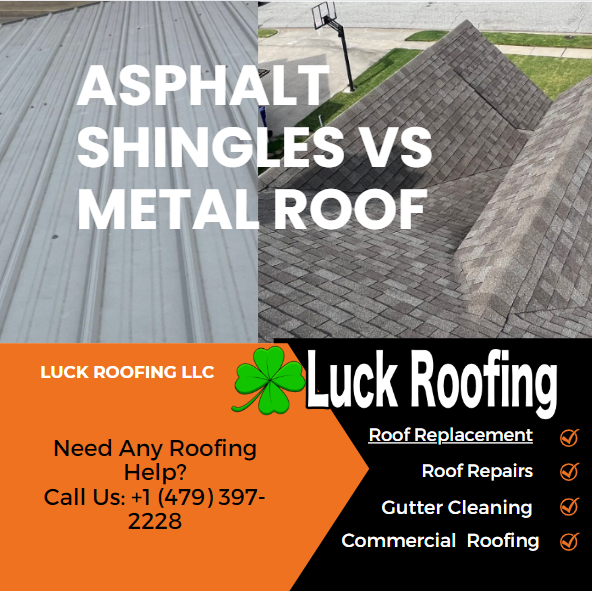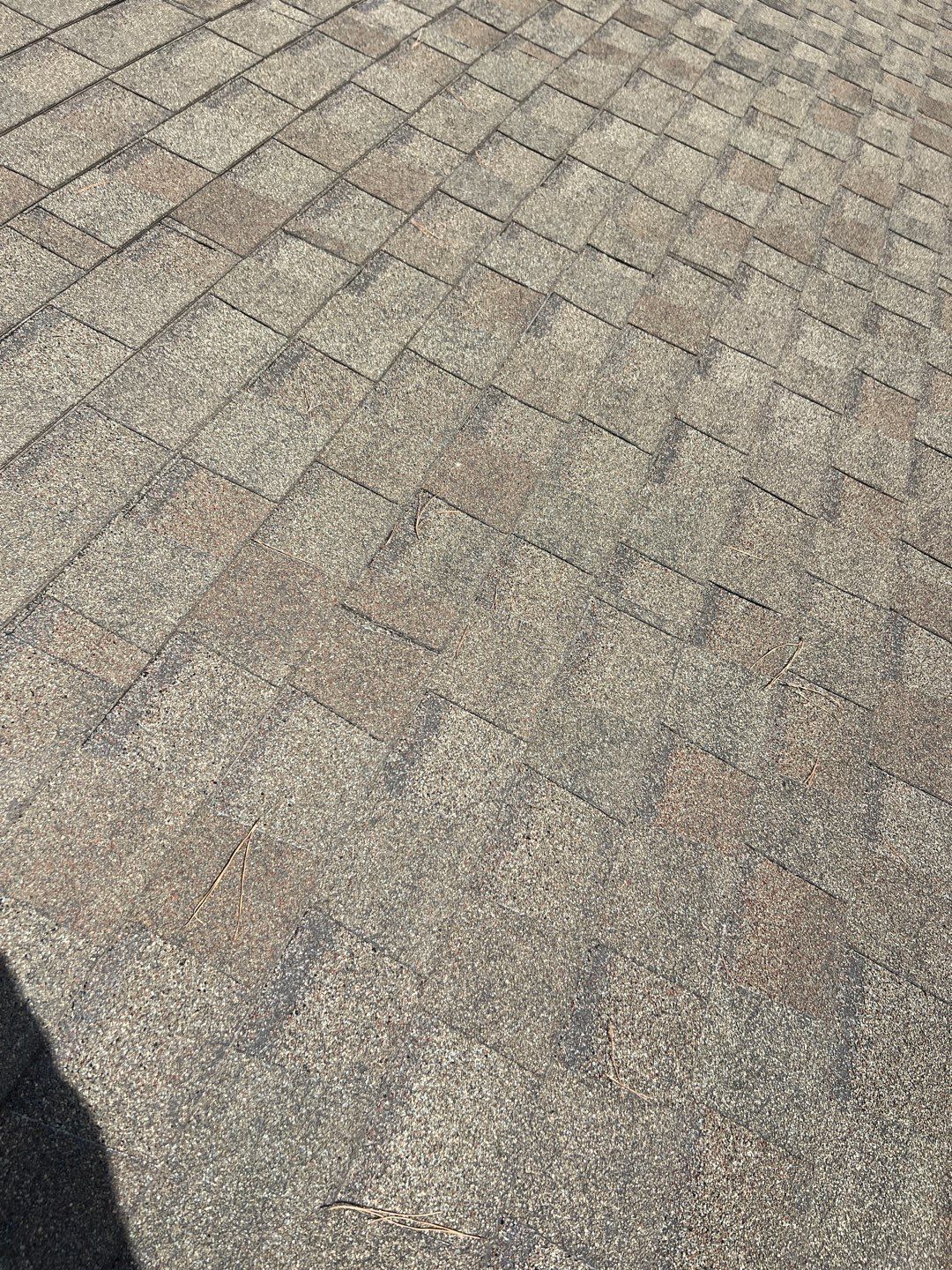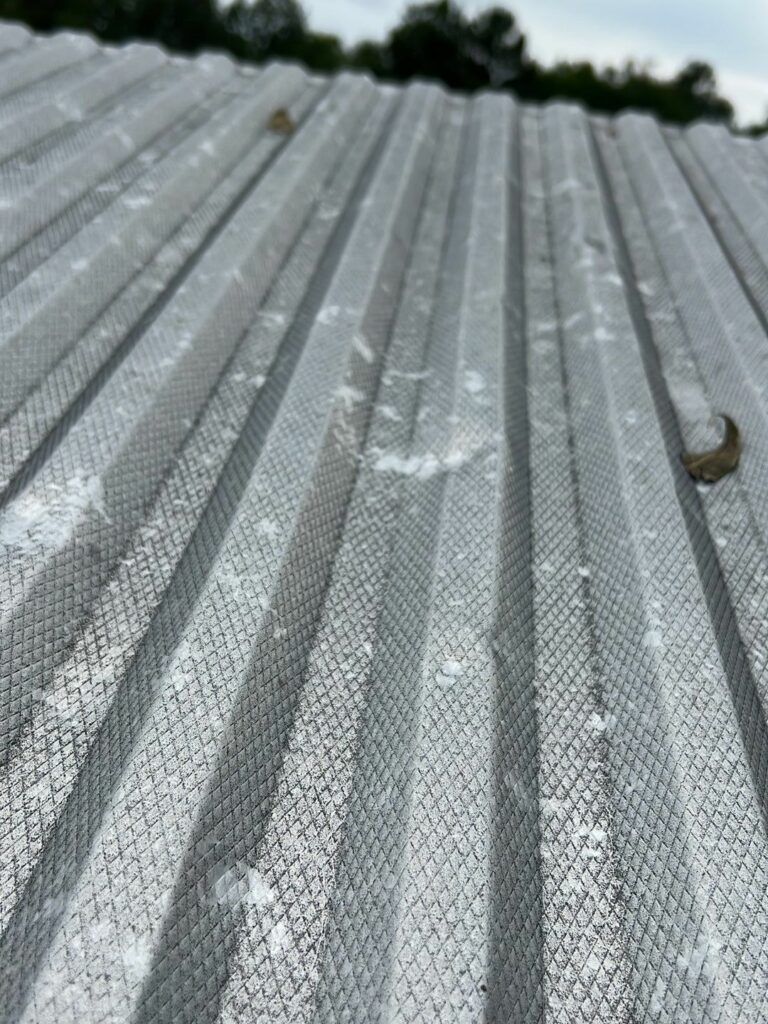 In today’s fast-paced world, homeowners are constantly seeking ways to make informed decisions about their property.
In today’s fast-paced world, homeowners are constantly seeking ways to make informed decisions about their property.
One such decision revolves around the choice between asphalt shingles and metal roofs. With a plethora of considerations to weigh, from durability and cost to aesthetics and environmental impact, it’s crucial to delve into the pros and cons of each option.
Whether it’s the timeless appeal of asphalt shingles or the modern resilience of metal roofs, the right choice can significantly impact a home’s value and protection.
So, what factors should homeowners prioritize when making this crucial decision?
Key Takeaways
- Metal roofs are more durable and have a longer lifespan compared to asphalt shingles, lasting 40-70 years versus 40-50 years.
- Metal roofs are highly resistant to extreme weather conditions, while asphalt shingles are more prone to damage from high winds, heavy rain, and hail.
- Metal roofs require less maintenance and are less susceptible to issues such as cracking, curling, and moss growth.
- Although metal roofing costs more upfront, it offers long-term cost savings, energy efficiency, and environmental benefits, including the ability to be recycled at the end of its lifespan.
Durability Comparison
When comparing the durability of asphalt shingles and metal roofs, it’s evident that metal roofs outperform shingles in terms of longevity and resistance to extreme weather conditions.
Metal roofing is known for its exceptional durability and ability to withstand harsh elements. With a typical lifespan of 40-70 years, metal roofs can last significantly longer than asphalt shingle roofs, which typically last around 40-50 years.
Metal roofs are constructed from strong and durable materials such as steel, aluminum, or copper, making them highly resistant to damage from high winds, heavy rain, and hail. In contrast, asphalt shingles are more vulnerable to cracking and can suffer from algae and fungus growth in certain climates.
This makes metal roofs a more reliable choice when it comes to withstanding extreme weather conditions. Additionally, metal roofs generally require less maintenance compared to asphalt shingles, reducing the need for regular inspections, repairs, or a full roof replacement.
Lifespan of Asphalt Shingles
 Asphalt shingles boast a lifespan of 40 to 50 years, making them a durable and long-lasting choice for residential roofing. This longevity is one of the reasons why asphalt shingles are a popular option among homeowners. While metal roofs are known for their durability, asphalt shingles can hold their own when it comes to lifespan. However, it’s important to note that the actual lifespan of asphalt shingles can be influenced by various factors, including weather conditions and the quality of installation.
Asphalt shingles boast a lifespan of 40 to 50 years, making them a durable and long-lasting choice for residential roofing. This longevity is one of the reasons why asphalt shingles are a popular option among homeowners. While metal roofs are known for their durability, asphalt shingles can hold their own when it comes to lifespan. However, it’s important to note that the actual lifespan of asphalt shingles can be influenced by various factors, including weather conditions and the quality of installation.
In areas with extreme weather conditions, such as heavy rain, snow, or high winds, the lifespan of asphalt shingles may be slightly shorter. Additionally, the quality of installation plays a significant role in the longevity of the shingles. Proper installation ensures that the shingles are secure and can withstand the elements effectively.
Regular maintenance and inspection are necessary to ensure that asphalt shingles reach their maximum lifespan. This includes checking for any signs of damage, such as cracks or missing shingles, and addressing them promptly. By taking proper care of the roof, homeowners can help extend the lifespan of their asphalt shingles and maximize their investment.
When considering roofing options, it’s important to weigh the lifespan of asphalt shingles against other materials, such as metal roofs. While metal roofs may have a longer lifespan, asphalt shingles still offer a significant amount of durability and can provide reliable protection for many years.
Lifespan of Metal Roofs
 Metal roofs, on the other hand, offer a longer lifespan compared to asphalt shingles, making them a durable and reliable choice for residential roofing. Metal roofs typically have a lifespan of 40 to 70 years, outlasting asphalt shingle roofs which generally last 40 to 50 years. This means that metal roofs last longer and provide homeowners with extended protection and peace of mind.
Metal roofs, on the other hand, offer a longer lifespan compared to asphalt shingles, making them a durable and reliable choice for residential roofing. Metal roofs typically have a lifespan of 40 to 70 years, outlasting asphalt shingle roofs which generally last 40 to 50 years. This means that metal roofs last longer and provide homeowners with extended protection and peace of mind.
One of the reasons why metal roofs last longer is because they can withstand extreme weather conditions. Whether it’s heavy rain, strong winds, or hailstorms, metal roofs have the ability to withstand these elements without getting damaged. This durability is a significant advantage over asphalt shingles, which can be easily damaged by harsh weather conditions.
Additionally, metal roofs require less maintenance compared to asphalt shingles. While both types of roofs require regular maintenance to ensure longevity, metal roofs generally need less attention. They’re less prone to issues such as cracking, curling, or moss growth, which are common problems with asphalt shingles. This means that homeowners with metal roofs can save time and money on maintenance tasks.
Cost Comparison
Comparatively more expensive upfront, metal roofing offers long-term cost savings due to its durability and extended lifespan. When comparing the cost of installing an asphalt shingle roof versus a metal roof, it’s essential to consider the long-term benefits and potential savings that come with the latter. Here are four key points to keep in mind when it comes to the cost comparison of these roofing materials:
- Higher upfront cost: Metal roofing generally costs about double the price per square foot compared to basic asphalt shingles. While asphalt shingles typically range from $4.25 to $4.95 per square foot, metal roofing can range from $8.50 to $39.70 per square foot, depending on the type of metal used.
- Long-term savings: Despite the higher initial investment, metal roofs can provide significant cost savings over time. Their durability and extended lifespan mean that homeowners may avoid the expense of frequent repairs and replacements, ultimately saving money in the long run.
- Energy efficiency: Metal roofs are known for their energy-saving properties. They reflect more sunlight, reducing the amount of heat absorbed into the home and lowering cooling costs during hot summer months. This increased energy efficiency can result in additional savings on utility bills.
- Potential insurance discounts and increased home value: Installing a metal roof can potentially lead to insurance discounts due to its durability and resistance to fire, hail, and wind damage. Moreover, a metal roof may increase the value of a home, making it an investment that pays off when it’s time to sell.
Considering the higher upfront cost, metal roofing may not be the most budget-friendly option initially. However, when factoring in its durability, energy efficiency, and potential long-term savings, it becomes clear that a metal roof can offer significant cost advantages over time compared to asphalt shingles.
Environmental Impact of Asphalt Shingles
The disposal of asphalt shingles contributes significantly to landfill waste, with approximately 11 million tons being sent to landfills each year. This has a negative environmental impact and raises concerns about sustainability.
Unlike metal roofs, asphalt shingles can’t be recycled, which means they end up taking up space in landfills. The production and disposal of asphalt shingles also contribute to fossil fuel dependency, making them less environmentally friendly compared to metal roofing.
Furthermore, asphalt shingles are less energy-efficient. They don’t reflect heat, which leads to increased cooling costs. On the other hand, metal roofs can reflect sunlight and reduce cooling expenses, making them more energy-efficient.
Additionally, metal roofing is often made from recycled materials and can be recycled at the end of its lifespan. This makes metal roofs a more sustainable and environmentally friendly option compared to asphalt shingles. The longevity of metal roofs and their ability to be recycled further contribute to their lower environmental impact.
Environmental Impact of Metal Roofs
With their recyclability and energy efficiency, metal roofs offer a sustainable choice for environmentally conscious homeowners. Here are some key points to consider regarding the environmental impact of metal roofs:
- Environmental Impact: Metal roofs are considered environmentally friendly due to their use of recycled materials and their ability to be recycled at the end of their lifespan. This reduces the amount of waste sent to landfills and helps conserve natural resources. You may also consider replacement with solar panels to help with environmental impact and carbon footprint deduction
- Energy Efficiency: Metal roofs can reflect sunlight, reducing the amount of heat absorbed into the home. This can result in lower cooling costs, higher energy efficiency, and reduced reliance on air conditioning systems.
- Roof Construction: Metal roofs have a longer lifespan compared to asphalt shingle roofs, ranging from 40 to 70 years. This means fewer replacements over time, reducing the environmental impact associated with manufacturing and disposing of roofing materials.
- Cost Considerations: While metal roofs may have a higher upfront cost compared to asphalt shingles, they can result in long-term savings. Metal roofs can increase a home’s value, potentially leading to higher resale prices. Additionally, their energy efficiency can result in lower energy bills, offering financial benefits over time.
Energy Efficiency Comparison
Considering the environmental impact and long-term cost savings of metal roofs, it’s important to examine their energy efficiency in comparison to asphalt shingles.
Metal roofs have been found to be more energy-efficient than asphalt shingles. This is because metal roofs have the ability to reflect sunlight, reducing the amount of heat absorbed into the building. As a result, the cooling costs can be significantly reduced, especially in warmer climates. On the other hand, asphalt shingles tend to absorb more heat, leading to higher cooling costs.
In terms of cost, asphalt shingles are generally more cost-effective upfront compared to metal roofing. However, metal roofs provide long-term energy savings that can offset the initial higher cost. Metal roofs have a longer lifespan and require less maintenance compared to asphalt shingles, contributing to their energy efficiency. With less maintenance required, homeowners can save on both time and money in the long run.
While asphalt shingles may be more affordable upfront, metal roofs offer better energy efficiency and durability over time. Although metal roofs have a higher initial cost, they can provide long-term cost savings due to their energy efficiency and lower maintenance needs. Thus, when considering energy efficiency, metal roofs are a more environmentally friendly and cost-effective option compared to asphalt shingles.
Maintenance Requirements
Regular inspections and maintenance are essential for maximizing the lifespan and protection of both metal and asphalt roofs. When it comes to maintenance requirements, there are some key differences between the two roofing materials. Here are some important considerations:
- Metal roofs generally require less maintenance compared to asphalt shingles.
- Regular inspections for debris or damage are recommended for both metal and asphalt roofs.
- Asphalt shingles present more maintenance challenges than metal roofs.
- Metal roofs may require occasional inspections and repairs, especially after extreme weather events.
While both types of roofs require attention, asphalt shingles tend to require more frequent maintenance due to their composition. They can be susceptible to algae growth, moss accumulation, and curling or cracking over time. Regular inspections can help identify any issues early on and prevent further damage.
On the other hand, metal roofs are known for their durability and longevity. They’re less likely to experience issues such as rotting, cracking, or warping. However, it’s still important to inspect them periodically for any loose or damaged panels, as well as to ensure that the flashing and sealants are intact.
In terms of cost, maintenance requirements can impact the long-term expenses. While metal roofs may have a higher upfront cost, their minimal maintenance needs can result in lower overall maintenance costs compared to asphalt shingles.
Aesthetics and Curb Appeal
Metal roofs offer a wide variety of styles, colors, and finishes, allowing homeowners to enhance the aesthetics and curb appeal of their property. With advanced manufacturing techniques, metal roofing provides a spectrum of choices, including shingle, slate, and shake styles. This allows for a more customized and visually appealing appearance that can complement different architectural designs and preferences. Learn more about slate vs asphalt shingle roofing here
On the other hand, architectural asphalt shingles can mimic the look of slate, wood shakes, and tile, offering a wide-ranging color palette and various finish options to suit individual tastes. Both metal roofs and asphalt shingles have the potential to enhance the overall curb appeal of a home. Metal roofs, with their modern and stylish appearance, make them an attractive option for homeowners looking to elevate the visual appeal of their property.
However, the choice between metal roofs and asphalt shingles should ultimately be based on the material that won’t only look visually appealing but also complement the overall design and style of the home. Consulting with a roofing contractor can help homeowners make an informed decision regarding the aesthetic impact and curb appeal of their roofing choice.
Frequently Asked Questions
Which Is Better a Metal Roof or Asphalt Shingles?
When comparing a metal roof to asphalt shingles, it’s important to consider factors like durability, cost, and aesthetics. Metal roofs tend to be more durable and energy-efficient, while asphalt shingles are more cost-effective and offer versatility in style options.
What Are the Disadvantages of a Metal Roof?
The disadvantages of a metal roof include higher upfront costs, specialized installation, potential difficulty in repairs, susceptibility to denting, potential for noise during rainfall, and limited accessibility for homeowners with budget constraints.
Is It Cheaper to Put a Metal Roof on or a Shingle Roof On?
It is generally cheaper to put a shingle roof on compared to a metal roof. Shingle roofs have a lower upfront cost, while metal roofs are more expensive due to their weight and durability.
Which Is Better a Metal Roof Over Shingles?
A metal roof installed over shingles can be a viable option, as it provides added durability and protection. However, proper installation is crucial to ensure the longevity and effectiveness of the roof.
Conclusion
In conclusion, when comparing asphalt shingles and metal roofs, homeowners must consider factors such as durability, cost, environmental impact, energy efficiency, and maintenance requirements.
While both options offer a range of styles and colors, metal roofs generally have a longer lifespan and are more resilient. Although metal roofs may have a higher upfront cost, they can potentially increase a home’s value and provide long-term energy savings.
Regular maintenance is essential for the longevity of both options.
Michael Overzat
Michael Overzat resides in Fort Smith, Arkansas with his wife and three kids. He enjoys to hike, skateboard, write, and get involved in charity organizations. He was originally born in Maryland. He has worked within the roofing industry for 5 years and is very active within the industry by attending conferences, masterminds, etc. His vision is to create a multi-state organization that has a customer centric model. He's worked for some of the biggest names in the industry and hopes to create a more people focused model for the roof replacement process.
